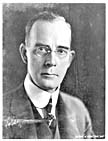

 In 1925, Henry F. Perkins, professor of zoology at the University of Vermont,
organized the Eugenics Survey of Vermont as an adjunct to his Heredity course.
Its mission was threefold: eugenics research, public education on their
findings, and support for social legislation that would reduce the apparent
growing population of Vermont's "social problem group." Most notorious of
these reforms was Vermont's 1931 eugenic sterilization law, "A Law for Human
Betterment by Voluntary Sterilization."
In 1925, Henry F. Perkins, professor of zoology at the University of Vermont,
organized the Eugenics Survey of Vermont as an adjunct to his Heredity course.
Its mission was threefold: eugenics research, public education on their
findings, and support for social legislation that would reduce the apparent
growing population of Vermont's "social problem group." Most notorious of
these reforms was Vermont's 1931 eugenic sterilization law, "A Law for Human
Betterment by Voluntary Sterilization."
Eugenics in Vermont did not begin with the Eugenics Survey, nor did it disappear after the Survey closed in 1936. This enterprise, however, with the support and endorsement of social reformers, government agencies and private philanthropies, acted as the official agency of the American eugenics movement in Vermont. Its archives, now stored in Vermont Public Records Division, Middlesex, Vermont, provide a detailed record of its studies and campaigns to shape public opinion and social policy in Vermont. The Eugenics Survey's investigations of Vermont families, institutional populations, and communities were inspired by the research models of the period; their publications dramatize their efforts to instill "a eugenic consciousness" among Vermonters. The Survey's projects reflect the shifting beliefs of biologists, sociologists, and psychologists about hereditary and social causes of human problems during the interwar years, while preserving an underlying commitment to manage Vermont's "underclass" through a comprehensive program of social planning, education, and reproductive control.
Continue to . . .